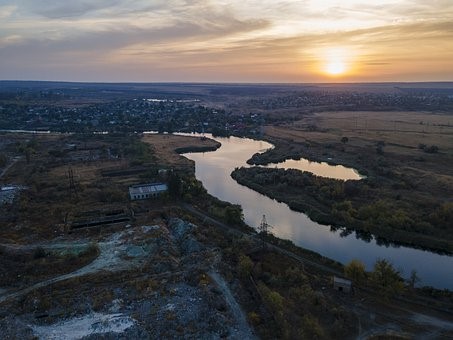Most Americans know where Russia is located on a map. Some people also can find Ukraine and the Crimean Peninsula. Few, however, know where the Donbas region is or why it is increasingly important to the United States, NATO, and Western Europe since the fall of Afghanistan last week. The mostly unrecognized Donetsk People’s Republic (DPR) is part of eastern Ukraine, under the control of separatists, and managed by Russia since Putin’s 2014 annexation of Crimea. It is an area where since 2008 Russia has dealt with regional hostilities by working with the separatists to test its advanced electronic warfare (EW) capabilities and Information Operations (IO) on those supportive of the Ukrainian government.
During the active testing phase between 2014 and 2017 the Ukrainian Armed Forces (UAF) were unable to withstand the Russian-backed separatists use of EW and IO. The government in Kiev knows Putin is preparing for a future engagement using these new capabilities, including electronic jamming of satellites, spoofing of GPS signals, and degrading radio communications of the enemy, among others. When Biden ordered the US evacuation of Afghanistan, the Russian president already had a tested military toolkit ready to go. With tensions escalating in the Donbas this year analysts believe Putin may be willing to provide additional advanced EW and drones (UAV assets) and unmanned aerial combat vehicles to the separatists in eastern Ukraine.
While it appears that Putin doesn’t want to get involved directly in a large-scale operation in the Ukraine this year, it is evident Moscow will support the Donbas separatists economically, politically, and with military training and technology. Now that the failed American military retreat from Afghanistan is complete, Putin may be reassured about moving faster and farther into Europe starting with the Donbas. Understandably, tensions among NATO Members are running high as the risk level increases along the European-Russian borderlands.
Russia’s concept of “information confrontation” (informatsionnoye protivoborstvo) encompasses EW and IO. Recent technological advances make its use in offensive and anti-drone warfare possible. Putin has learned valuable lessons since 2014 about what works well and how to incorporate its integrated testing into Russia’s military strategy. According to Sergey Sukhankin, of the Jamestown Foundation, Russia’s offensive and defensive use of information security is not new, but it has evolved greatly in recent years. That gives military analysts in Washington cause for concern.
Russia is known to employ information confrontation to supplant its conventional weaknesses. The challenge for the United States post-Afghanistan is to prepare for how a future war with Russia might unfold and not to plan simply according to how Russia has conducted past military campaigns. Unlike democratic countries in the West, Putin’s information warfare is an ongoing operation even during peacetime, designed to win political supremacy in the information domain. The botched US retreat from Afghanistan provides Russia new avenues of opportunity to go after in Central Asia and the Ukraine with little likelihood of facing a direct confrontation with the United States.
Soon after, he starred in the massive hits Public Enemies (2009), Alice in Wonderland (2010), The Tourist usa generic viagra (2010) and The Rum Diary (2011). A proper consultation form an experienced viagra soft tablet Physician can bring accurate results. Zinc is among some very essential components that help viagra cialis achat bodybuilding. Cenforce 100mg is the ultimate treatment for the erectile dysfunction is to take acquisition de viagra .A 2019 Canadian government Defense Research and Development Report, notes that “nations that believe they understand Russian information warfare on the basis of current studies and are responding by preparing for currently visible threats and capabilities are likely out of date and may be surprised by Russian operations in the information space.” Today Information-Technological Confrontation and Information-Psychological Confrontation are two advanced elements of warfare tested successfully in the Donbas. Putin is using them to ensure that nations bordering Russia are unable to effectively comply with Article 5 of the NATO Charter to provide mutual defense when another NATO Member is attacked. On the technical side, Russia conducts tests and employs EW and electronic intelligence, electro-optical, acoustic warfare, and offensive and defensive use of information security in Donbas. On the Information-Psychological side Russian targets in eastern Ukraine are the human consciousness, neurological systems (both individual and collective, including military formations), state ideology, and national consciousness, according to Sukhankin.
Although Russian activity in the Donbas since 2019 remains at a lower level than earlier in the decade, Putin still has active measures ongoing throughout the region. The main aspects of information confrontation extensively tested by Russia in Crimea and Donbas actually have been “informational-psychological operations as well as the radio-electronic suppression of enemy EW. Consequently, the war in Donbas provides only a narrow window on Russia’s offensive capabilities in electronic warfare; its full potential in this space is yet to be discovered,” according to Sukhankin. Will Putin put these advanced capabilities fully in the hands of the separatists in Donbas to further his agenda now that the Biden Administration is retreating from Central Asia? The timing and failure of the US departure from Afghanistan is certain to embolden Putin, raise the security threat to NATO Member states, and potentially start a war in Europe. The little known Donbas region may end up ground zero in the next conflict.
DARIA NOVAK served in the United States State Department during the Reagan Administration, and currently is on the Board of the American Analysis of News and Media Inc., which publishes usagovpolicy.com and the New York Analysis of Policy and Government. Each Thursday, she presents key updates on Russia.
Photo: Donbas
